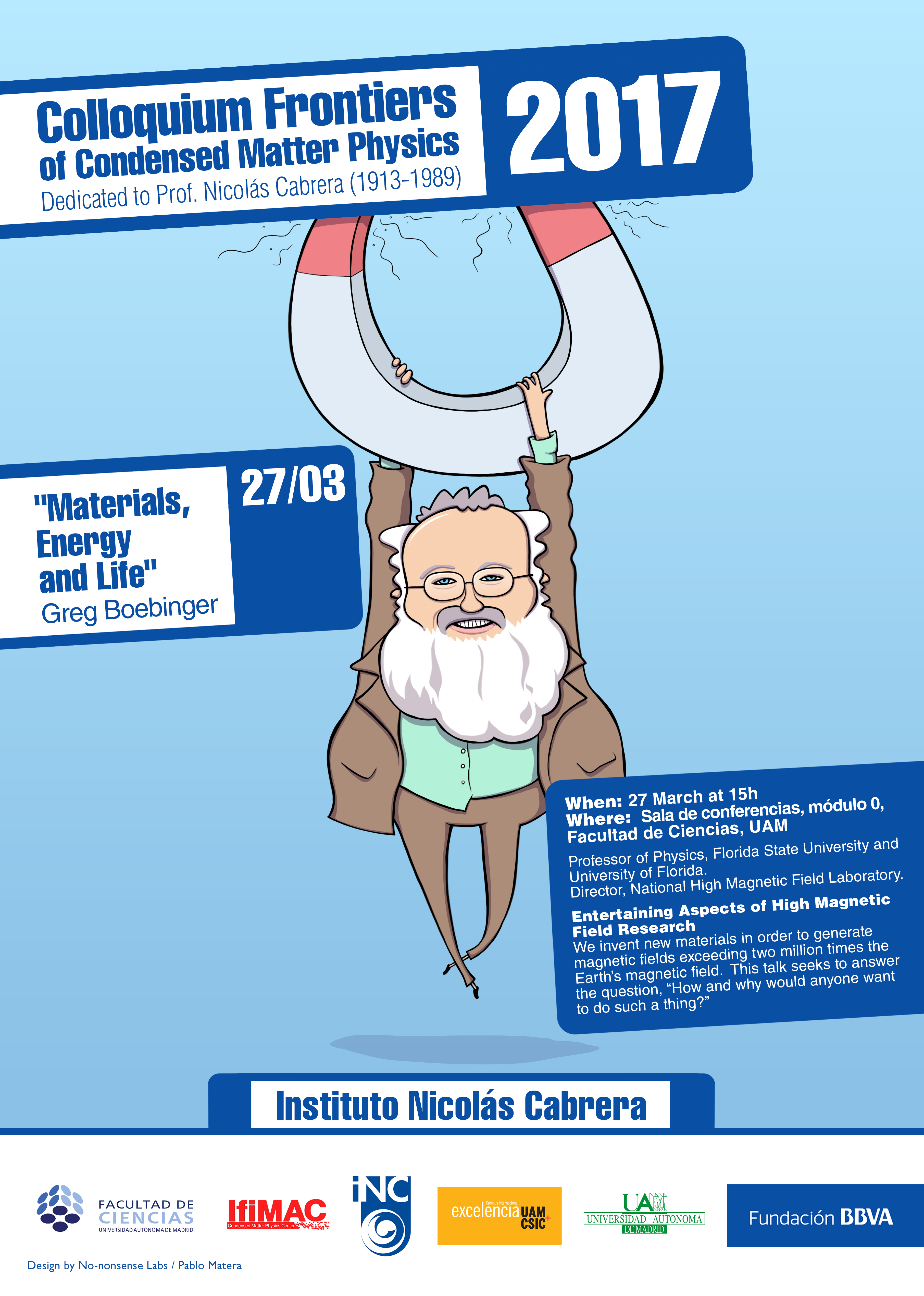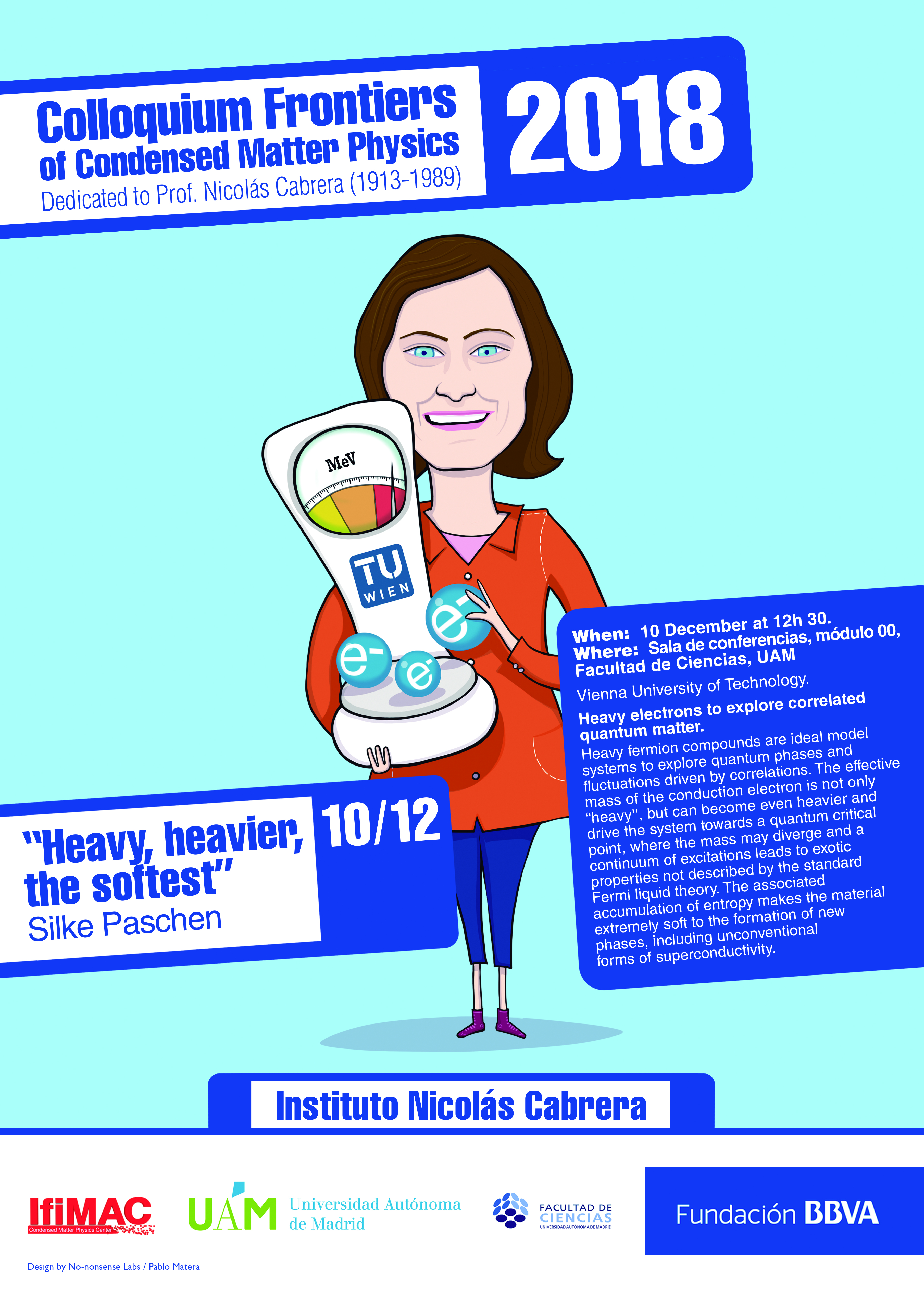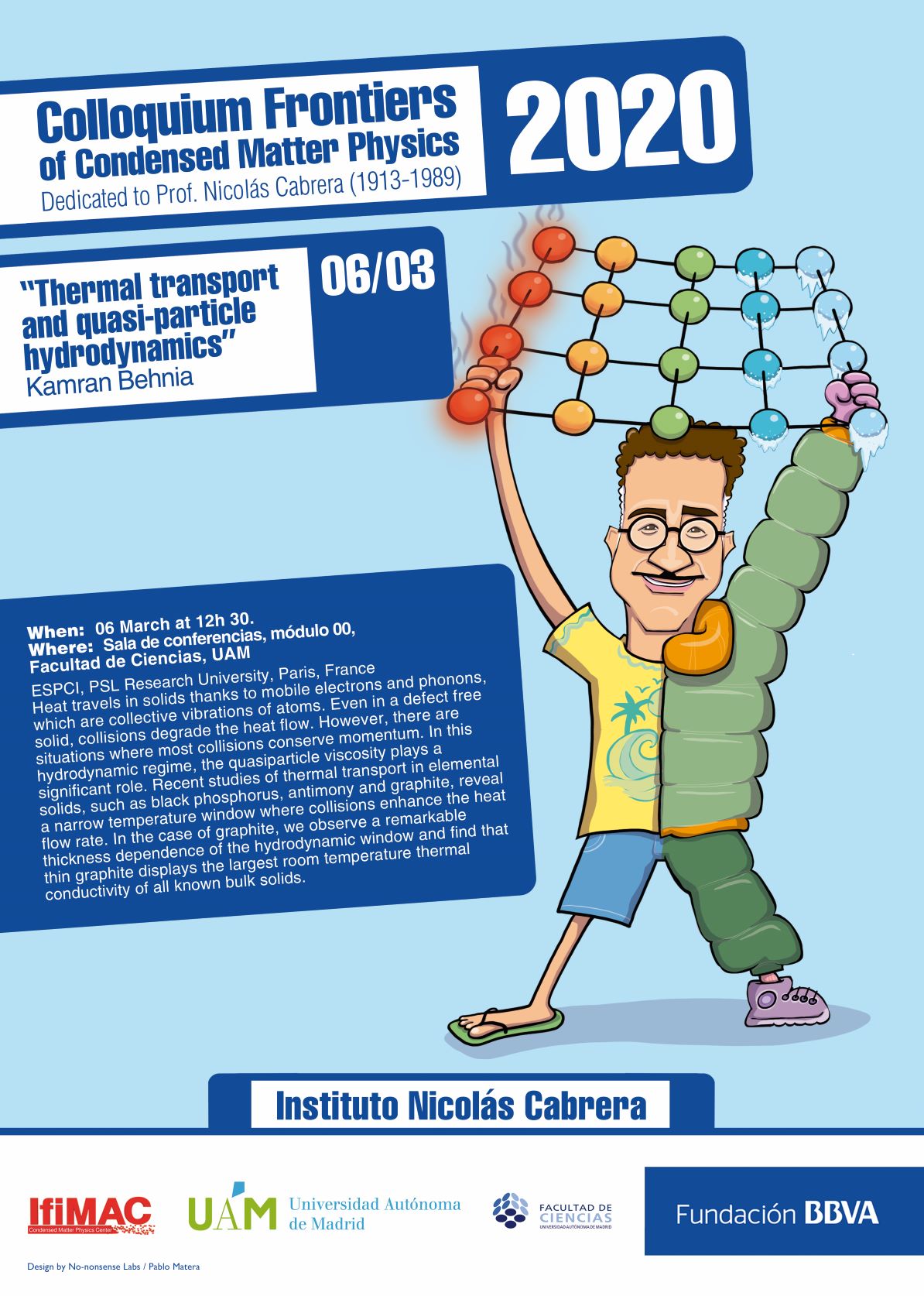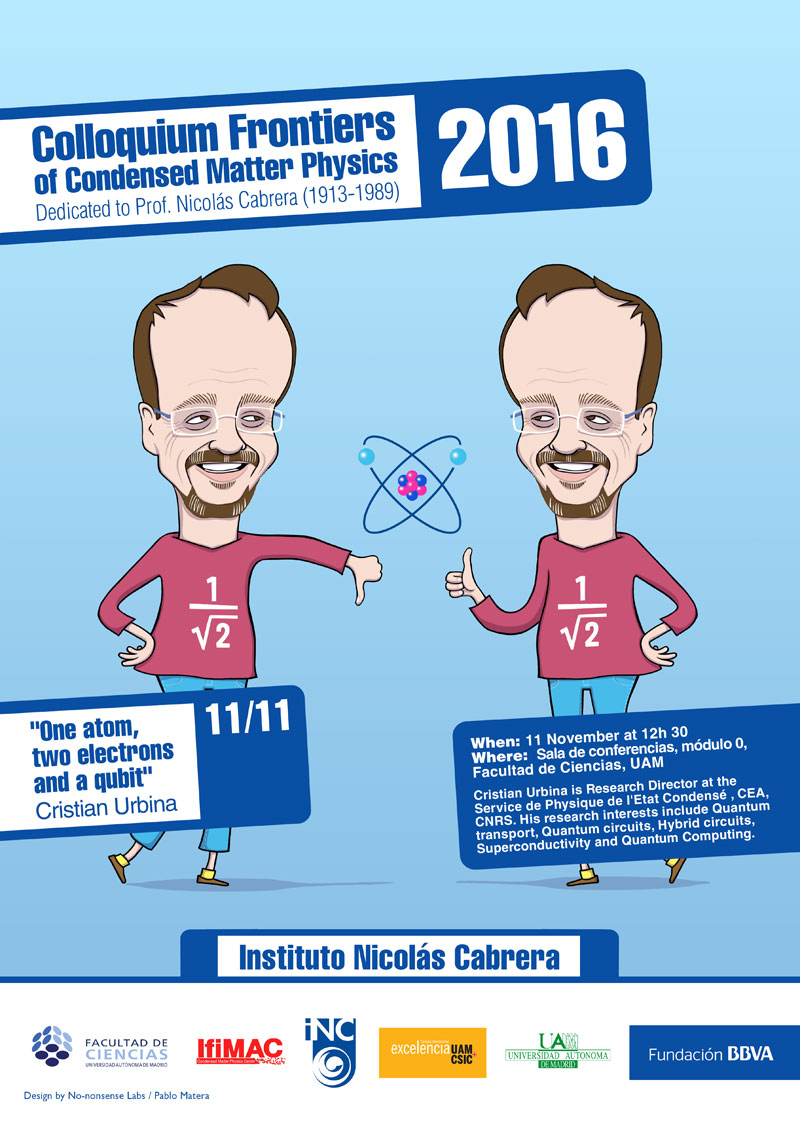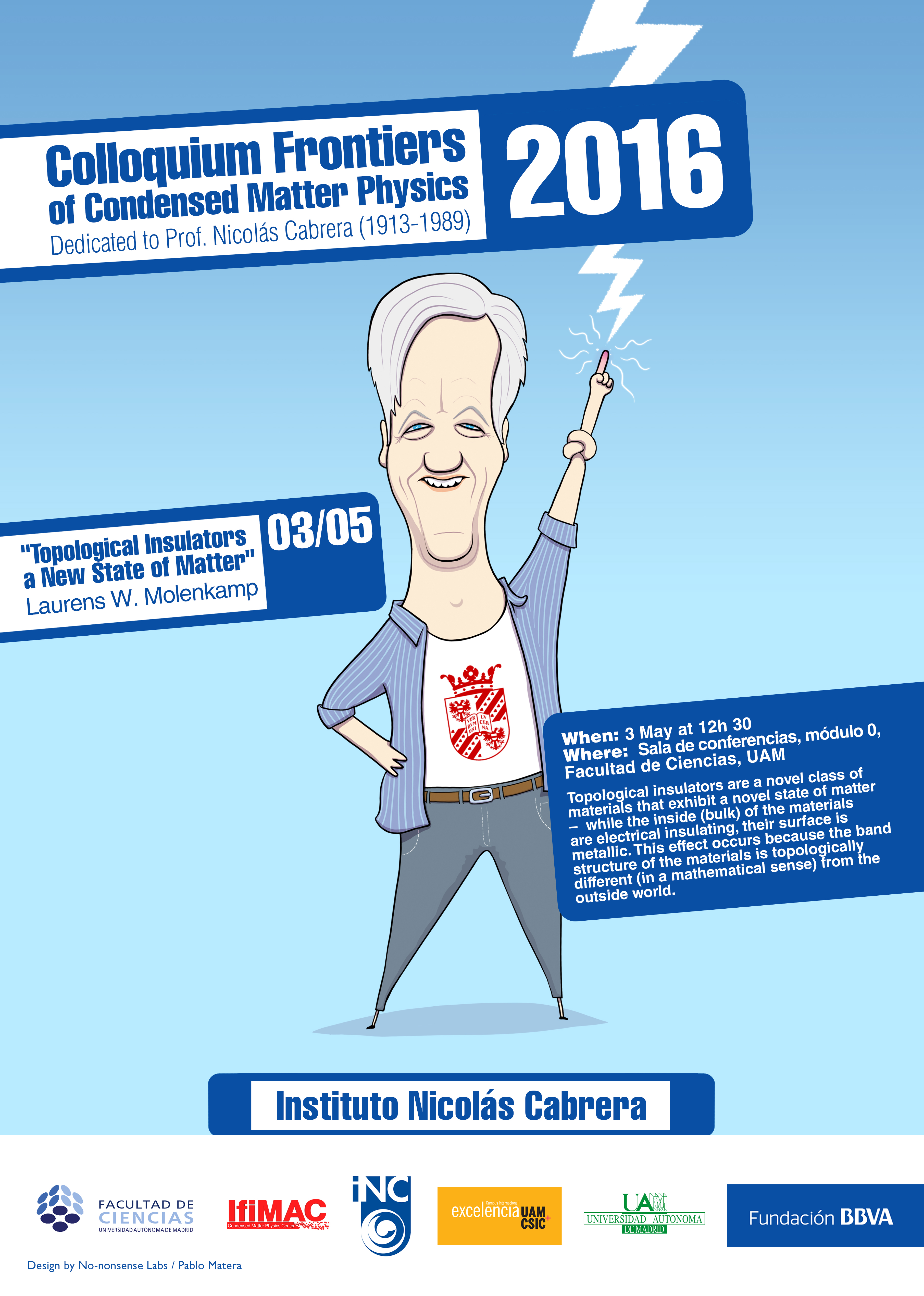
Colloquiums INC 2016: Topological Insulators – A New State of Matter
“Topological Insulators – a New State of Matter”
Laurens W. Molenkamp
Tuesday, 3 May, 12h30
Sala de conferencias módulo 00, Facultad de Ciencias.
Laurens W. Molenkamp, Physikalisches Institut (EP3), Würzburg University.
High resolution poster here.
Abstract:
Topological insulators are a novel class of materials that exhibit a novel state of matter – while the inside (bulk) of the materials are electrical insulating, their surface is metallic. This effect occurs because the band structure of the materials is topologically different (in a mathematical sense) from the outside world.
This talk describes our discovery of this type of behavior while studying the charge transport properties of thin, two-dimensional layers of the narrow-gap semiconductor HgTe. These layers exhibit the quantum spin Hall effect, a quantized conductance which occurs when the bulk of the material is insulating. Using various tricks one can show that the transport occurs along one-dimensional, spin-polarized channels at the edges of the sample.
Also thicker HgTe samples can be turned into topological insulators, but now the surface states are two-dimensional metallic sheets. The metal in these sheets is rather exotic in that the band structure is similar to that encountered for elementary particles – the charge is carried by so-called Dirac fermions. This means that experiments on these layers can be used to test certain predictions from particle theory that are difficult to access otherwise.
As an example, I will describe experiments where a supercurrent is induced in the surface states by contacting these structures with Nb electrodes. AC investigations indicate that the induced superconductivity is strongly influenced by the Dirac nature of the surface states. We present strong evidence for the presence of a gapless Andreev mode in our junctions.

